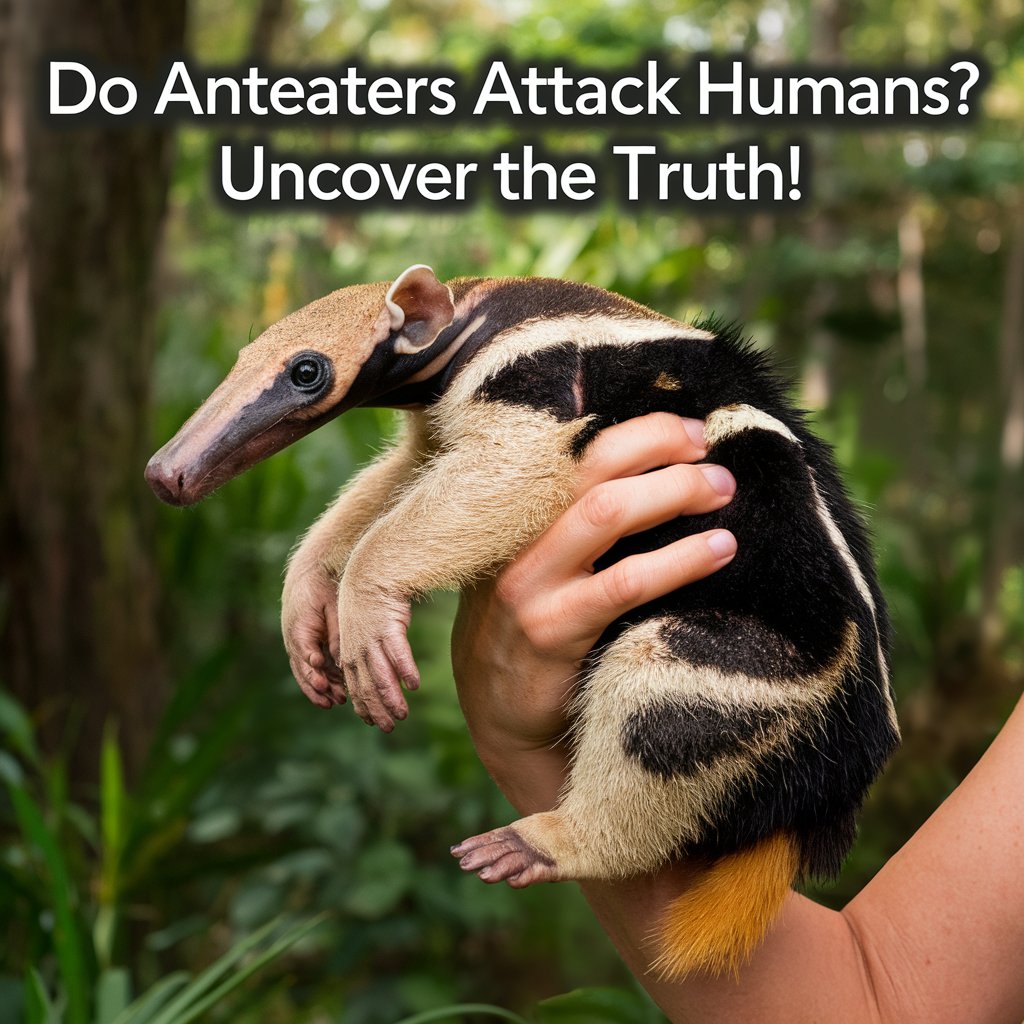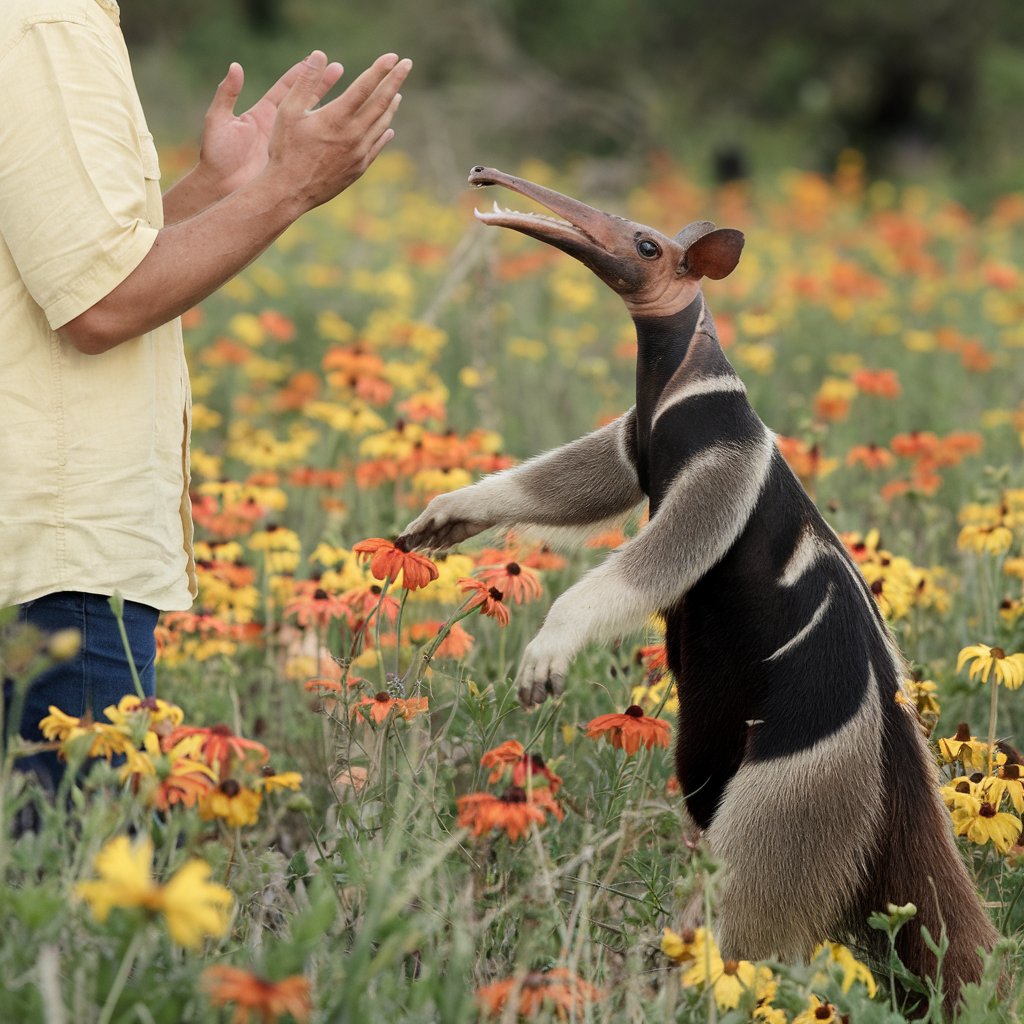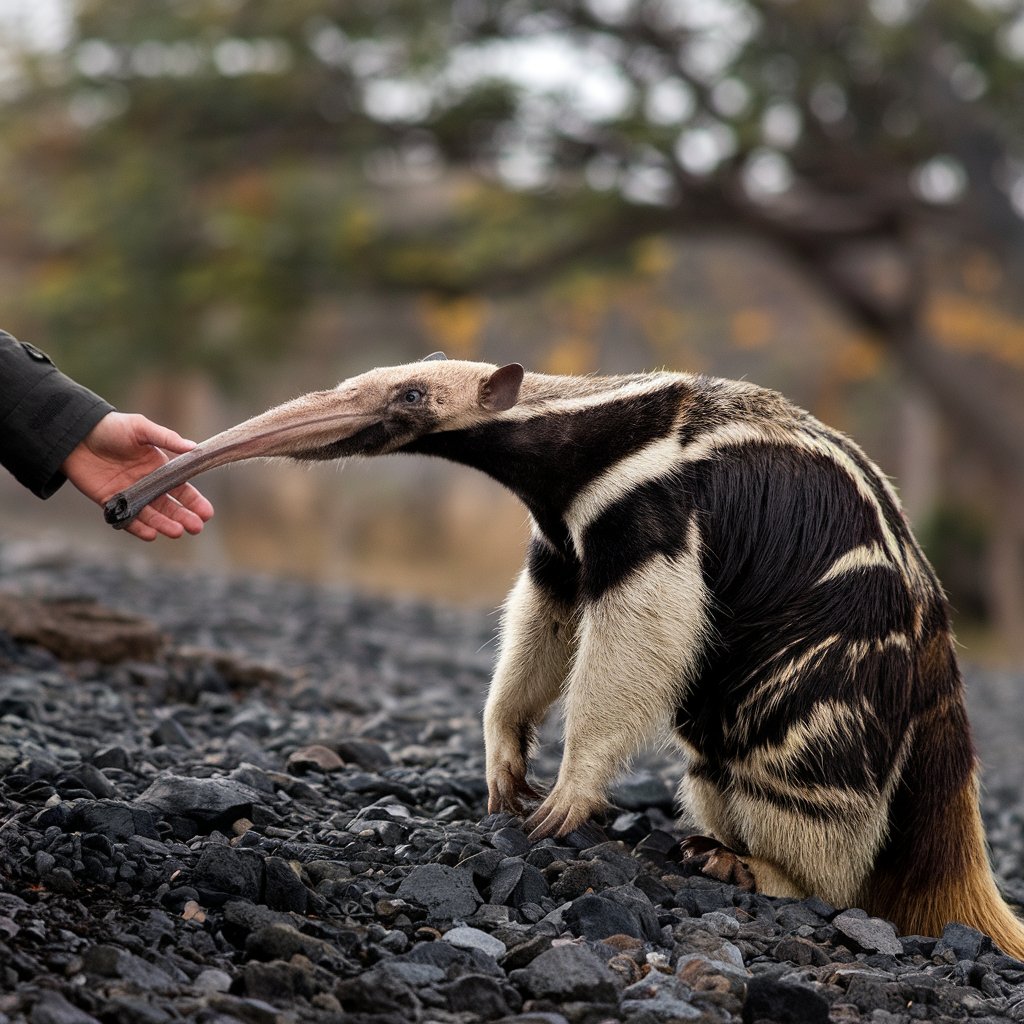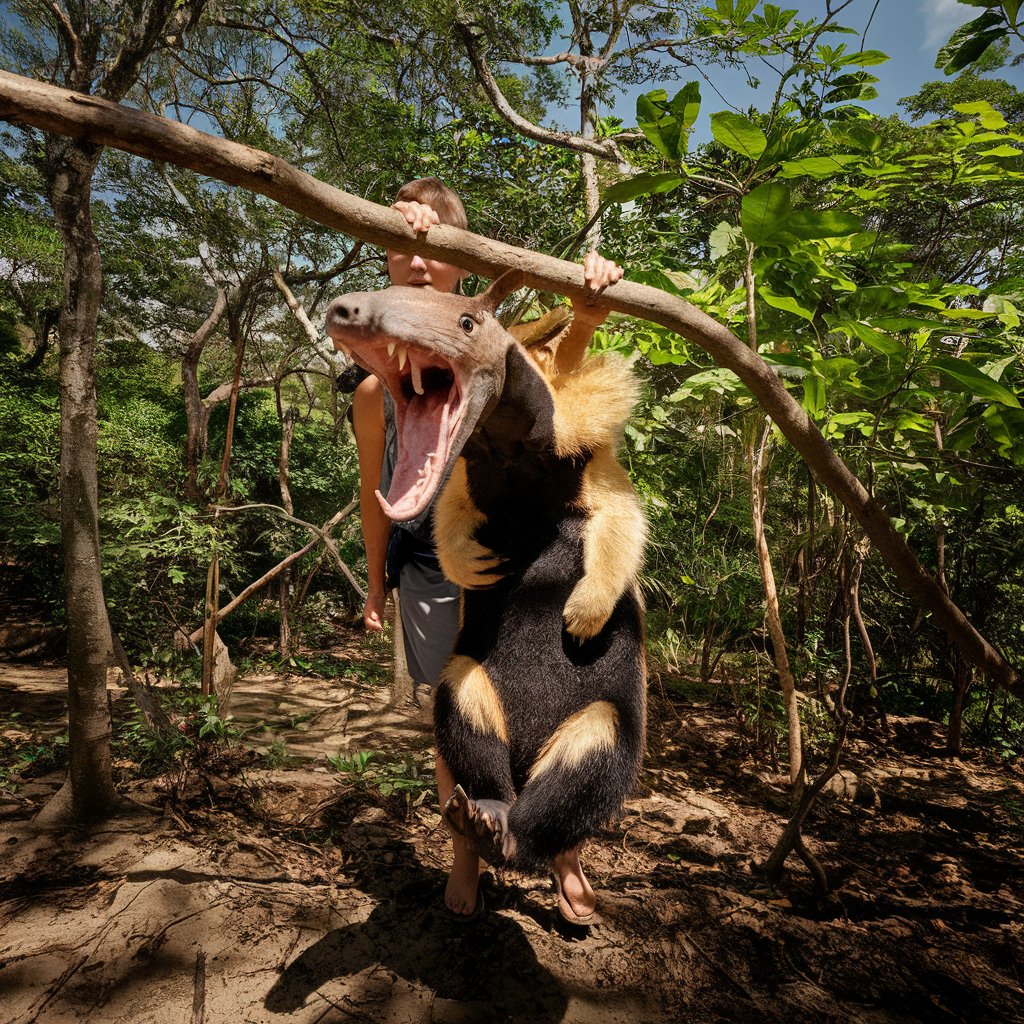Do anteaters attack humans? This question may arise when thinking about these fascinating creatures. Anteaters, with their long snouts and sticky tongues, are generally peaceful animals that pose no threat to humans in most situations. However, like many wild animals, they can display defensive behavior when they feel threatened or cornered.
Understanding their habits, behavior, and how to safely interact with them can help minimize the risk of accidental encounters.
This article takes a deep dive into human-anteater interactions, the risks associated with these encounters, and the steps you can take to safely coexist with these extraordinary animals.
Here’s a detailed table summarizing key facts and figures from the article:
| Category | Details |
|---|---|
| Scientific Order | Pilosa |
| Number of Anteater Species | 4 (Giant Anteater, Silky Anteater, Southern Tamandua, Northern Tamandua) |
| Giant Anteater Size | Up to 7 feet long, weighing 60-90 pounds |
| Silky Anteater Size | Less than 14 inches long, weighing 0.5 pounds |
| Southern/Northern Tamandua Size | 3-5 feet long, weighing 7-20 pounds |
| Claw Length | Up to 4 inches |
| Tongue Length | Up to 2 feet |
| Diet | Primarily ants and termites (up to 30,000 insects a day) |
| Natural Habitat | Rainforests, grasslands, and savannas in Central and South America |
| Activity Pattern | Nocturnal and crepuscular (active at night and twilight) |
| Defense Mechanism | Defensive stance, sharp claws, and rearing on hind legs |
| Known Predators | Jaguars, pumas, and large snakes |
| Human-Anteater Incidents | Extremely rare; documented cases include zookeeper injuries and one fatal encounter in Brazil |
| Deforestation Impact | Major threat to anteater populations due to habitat loss |
| Conservation Status | Giant Anteater: Vulnerable (IUCN Red List) |
| Protective Measures | Wildlife sanctuaries, habitat preservation, and conservation awareness |
| Safe Distance from Anteaters | At least 20 feet |
| Common Encounter Triggers | Sudden movements, proximity to offspring, or cornering the animal |
What Are Anteaters?
Anteaters are mammals belonging to the order Pilosa, closely related to sloths. They are well-known for their specialized adaptations that allow them to thrive as insect-eaters. With a lack of teeth, powerful forelimbs, and extraordinarily long tongues, anteaters are tailor-made for consuming ants and termites.

Types of Anteaters
There are four species of anteaters, each with distinct traits:
| Species | Size | Habitat | Special Traits |
|---|---|---|---|
| Giant Anteater | Up to 7 feet long | Grasslands, savannas, rainforests | Large claws, bushy tail |
| Silky Anteater | Less than 14 inches long | Tropical rainforests | Tiny, tree-dwelling species |
| Southern Tamandua | 3-5 feet long | Forests and grasslands | Arboreal, semi-prehensile tail |
| Northern Tamandua | Similar to southern species | Central American forests | Excellent climber, nocturnal habits |
Each species has unique adaptations to suit its environment, but all anteaters share common traits:
- Long tubular snouts to house their tongues.
- Sticky tongues that can extend up to 2 feet to capture insects.
- Sharp claws designed for digging into termite mounds and defending against predators.
While their physical adaptations are mostly defensive and utilitarian, they can become dangerous under certain conditions.
Can Anteaters Attack Humans?
The idea of an anteater attacking a human might sound unusual, but it is not entirely out of the realm of possibility. While anteaters are non-aggressive, they can become defensive when threatened, startled, or cornered.
Unlike carnivores, anteaters do not view humans as prey. Their interactions with humans are largely accidental or circumstantial. When provoked, however, they can rely on their powerful forelimbs and sharp claws to defend themselves.
Factors That Lead to Defensive Behavior
- Feeling Threatened: If an anteater feels cornered or believes it has no escape route, it may lash out.
- Maternal Instincts: Mother anteaters are fiercely protective of their young and may attack if their offspring are in danger.
- Sudden Movements: Anteaters are easily startled. Rapid or unexpected actions can trigger a defensive response.
- Intrusion into Habitat: Human activities such as farming, deforestation, or hiking in anteater territories can lead to encounters.
The Defensive Nature of Anteaters
Anteaters are solitary and peaceful by nature. They avoid conflict whenever possible, opting to flee rather than fight. However, their defensive stance is formidable when escape is not an option.
How Anteaters Defend Themselves
When threatened, anteaters stand on their hind legs, using their bushy tails as support. This defensive stance allows them to brandish their sharp claws, which are capable of delivering powerful swipes.

Key Defensive Features
| Feature | Details |
|---|---|
| Claws | Up to 4 inches long; designed for digging and self-defense |
| Defensive Stance | Rears up on hind legs to appear larger and more intimidating |
| Tail | Acts as a stabilizer during the defensive posture |
| Strength | Capable of delivering forceful blows to predators or threats |
This defensive strategy is effective against natural predators like jaguars and pumas, which often retreat after facing an anteater’s claws.
When and Why Do Anteaters Become Defensive?
Understanding the triggers that provoke an anteater’s defensive behavior is key to avoiding risky encounters.
Situational Triggers
- Encounters with Predators: Anteaters are naturally wary of larger animals that may pose a threat, such as jaguars and pumas.
- Maternal Instincts: Female anteaters with offspring are especially vigilant and quick to defend their young.
- Human Proximity: Close encounters during hiking, farming, or other outdoor activities can provoke a defensive reaction.
Behavioral Patterns
Anteaters are mostly nocturnal or crepuscular, meaning they are active at night or during twilight. This reduces the likelihood of human encounters but makes sudden meetings more startling.
How Dangerous Are Anteater Claws?
The claws of an anteater are its primary means of defense. While designed for digging into termite mounds, they can also cause serious injury to potential threats.
| Trait | Details |
|---|---|
| Length | Up to 4 inches |
| Strength | Can tear through termite mounds and thick bark |
| Defensive Use | Capable of inflicting deep cuts and serious injuries |
Potential Risks to Humans
Although anteater attacks on humans are rare, they can have severe consequences:
- Deep Lacerations: Their claws can cause significant injuries if they swipe in defense.
- Fatal Outcomes: In rare cases, such as the Brazilian incident, defensive strikes have proven fatal.
While these animals are not inherently aggressive, their physical abilities make them a force to be reckoned with when provoked.
Documented Human-Anteater Interactions
Several incidents illustrate the potential dangers of human-anteater encounters, though such cases are exceedingly rare:
- Brazilian Farmer Incident: A farmer in Brazil was fatally injured after accidentally surprising a giant anteater in the wild.
- Zookeeper Injuries: In captivity, improper handling has led to injuries among zookeepers. Protective gear is essential when managing anteaters.
- Researcher Encounters: Field studies sometimes result in defensive reactions, especially if researchers approach too closely or suddenly.

Safety Tips for Encountering Anteaters
Encounters with anteaters are rare but possible in areas where their habitats overlap with human activities. By following these safety guidelines, you can minimize risks:
Dos and Don’ts
- Do:
- Maintain a safe distance (at least 20 feet).
- Observe quietly without making sudden movements.
- Back away calmly if the anteater notices you.
- Don’t:
- Approach an anteater, especially one with young.
- Make loud noises or fast gestures.
- Let pets roam freely in areas where anteaters are present.
Advice for Professionals
Zookeepers, researchers, and wildlife handlers should take extra precautions:
- Wear protective gloves and clothing.
- Use tools or barriers to maintain a safe distance.
- Monitor the animal’s behavior for signs of agitation.
Conservation and Coexistence
Human-anteater encounters are more likely in regions where habitat loss forces these animals closer to human populations. Deforestation, agriculture, and urban expansion have all contributed to this overlap.
Conservation Efforts
- Wildlife Sanctuaries: These protected areas provide safe habitats for anteaters while minimizing contact with humans.
- Educational Programs: Public awareness campaigns highlight the importance of respecting wildlife.
- Habitat Preservation: Efforts to protect rainforests and grasslands help ensure anteaters can thrive without human interference.
Coexistence Strategies
- Avoid disrupting natural habitats.
- Support conservation initiatives.
- Learn about the species to foster understanding and respect.

FAQs
Are anteaters aggressive towards humans?
Anteaters are generally non-aggressive but can defend themselves fiercely with their sharp claws if they feel cornered or threatened.
Are anteaters friendly?
Anteaters can show affectionate behavior in captivity, responding to names and seeking attention, but they are solitary in the wild and avoid human interaction.
Have anteaters ever killed a human?
Though rare, anteaters’ powerful claws have caused fatal injuries to humans in defensive situations, as seen in a few recorded incidents.
Can anteaters be kept as pets?
Owning an anteater is legal in some places, but local laws and permits vary. They require specific care and aren’t ideal pets for most people.
Are anteaters blind?
Anteaters have poor eyesight but compensate with an exceptional sense of smell, which is 40 times more powerful than that of humans.
Are anteater claws sharp?
Anteaters have incredibly sharp claws, measuring up to four inches, which they use for both hunting and defense, making them capable of inflicting severe damage.
How powerful is an anteater?
Anteaters possess powerful forelimbs and claws that allow them to break into termite mounds with ease and defend themselves against predators like jaguars.
Is it safe to own an anteater?
While anteaters can be kept as pets in some areas, they require specific care, and their powerful claws and independent nature make them challenging to manage.
What animal is closest to an anteater?
Anteaters are most closely related to armadillos and sloths, forming part of the superorder Xenarthra, which includes several unique mammals.
How fast can an anteater run?
Anteaters are capable of reaching speeds of over 30 miles per hour when necessary, although they usually prefer a slower, shuffling gait.
Are anteaters aggressive towards humans?
Anteaters are not inherently aggressive, but if threatened or cornered, they can become fierce and defend themselves with their sharp claws.
Do anteaters have rabies?
Anteaters, though not commonly associated with rabies, have been known to contract the virus in rare instances, as seen with a zoo anteater in Tennessee.
Can anteaters harm humans?
While anteaters are generally peaceful, their sharp claws can cause severe injuries if they feel threatened, leading to dangerous encounters with humans.
Do anteaters play with humans?
Anteaters are solitary creatures and tend to avoid human interaction, focusing mainly on foraging for ants and termites, not on playful behaviors.
How long do anteaters live?
In the wild, giant anteaters typically live up to 14 years, while those under human care can reach an impressive 26 years of age.
Final Thoughts
So, do anteaters attack humans? The truth is that while they are capable of defending themselves with remarkable strength, anteaters are not naturally aggressive toward humans. They are peaceful, solitary animals that prefer to avoid conflict.
By respecting their space, understanding their behavior, and following safety precautions, humans can coexist safely with these remarkable creatures.
Anteaters are more than their claws—they are a crucial part of their ecosystems and deserve our admiration and protection. Let’s ensure these unique animals continue to thrive in the wild, where they belong.
“In understanding wildlife, we find the key to peaceful coexistence.”
Read more knowledgeable blogs on Flowy Magazine

James Clair is a passionate writer and researcher with a deep fascination for animal behavior and its intricate connection to human life. With a background in [relevant field of study, e.g., zoology, psychology, ethology], James has spent years studying the natural world, focusing on how animals’ actions and instincts impact human emotions, behavior, and society.
His expertise in [specific topics or regions of focus, e.g., canine psychology, animal communication, wildlife conservation] has led to numerous published works and collaborations with renowned researchers and institutions. Through his work at Flawy Magazine, James aims to bridge the gap between scientific research and public understanding, offering insightful, accessible articles that explore the complex relationship between humans and animals.
When he’s not writing, James enjoys [personal hobbies or interests, e.g., hiking in nature, volunteering at animal shelters, photography] and is an advocate for [cause or charity related to animals or conservation]. His mission is to inspire readers to see animals not just as companions or creatures of the wild, but as beings whose behavior holds valuable lessons for us all.









